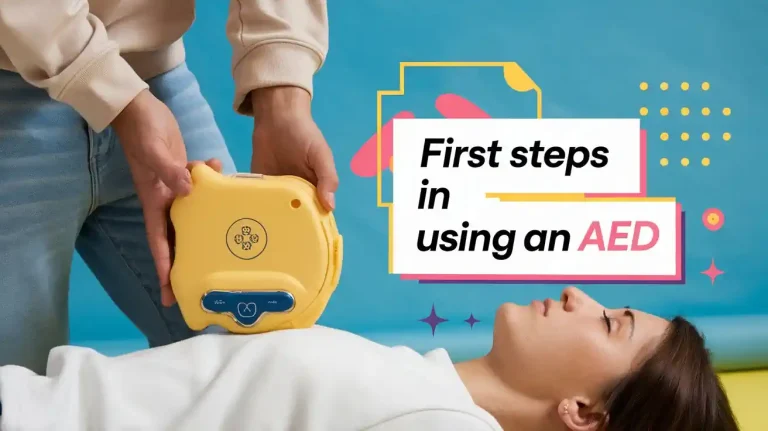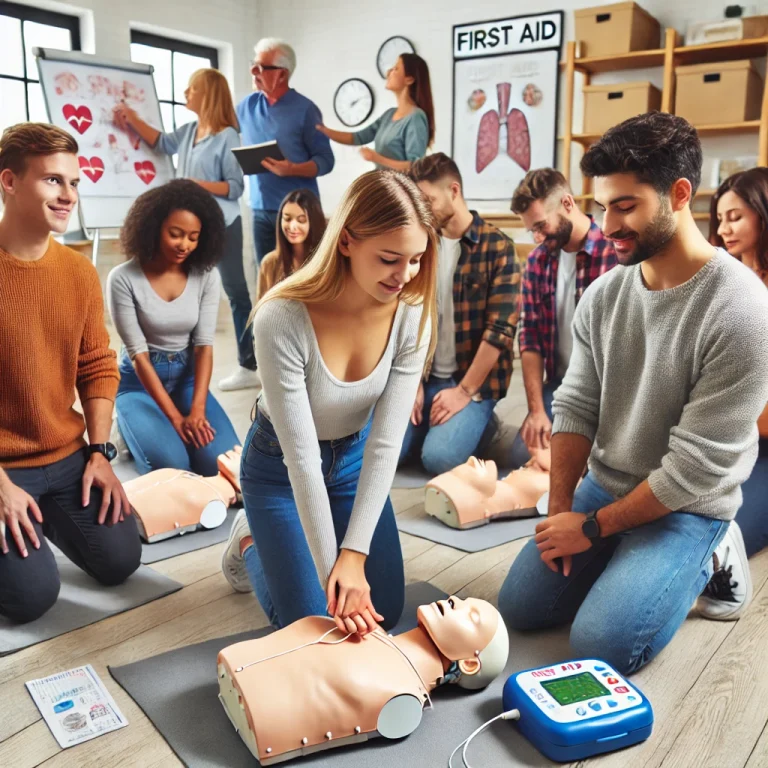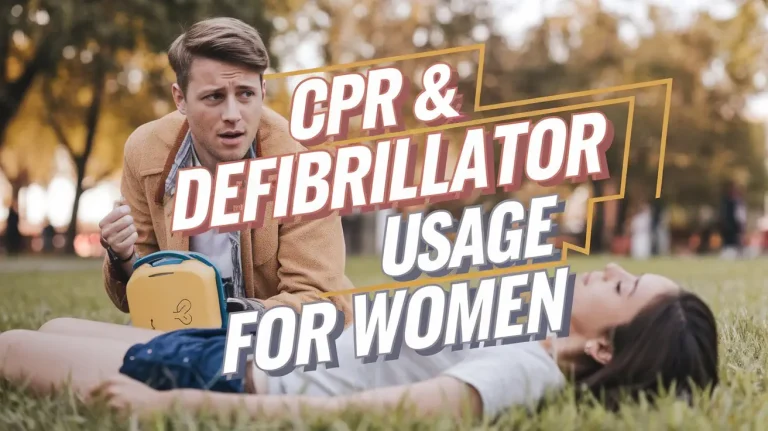Can You Use a Defibrillator in the Water or Rain?
Emergencies can happen anywhere, at any time – even in wet environments. Imagine you’re at the beach, enjoying a swim, when suddenly someone collapses on the shore. Or maybe you’re at a park when a rainstorm hits, and a person nearby goes into cardiac arrest. In these critical moments, can you still use a defibrillator safely? Let’s find out!
Using a Defibrillator in the Rain

Picture this: you’re in a park when someone collapses, and you suspect they’re in cardiac arrest. You spot a defibrillator nearby, but they are out in the rain. What do you do?
Here’s the good news – you can absolutely use a defibrillator in the rain. In fact, it’s better to take action than to waste precious time moving the person to a dry location. Every second counts in a cardiac emergency!
Just keep a few things in mind:
- Make sure the person isn’t lying in a big puddle. If they are, quickly move them to a drier spot or lift them out of the water.
- Wipe any pooling water off their chest before attaching the defibrillator pads. This helps ensure good contact.
- If their clothes are soaked, don’t be shy – cut them open to access the chest.
The defibrillator itself can handle a bit of moisture, so don’t let a little rain stop you from saving a life!
So let’s recap: Can you use a defibrillator in the rain? Yes! While it’s best to move the person out of any puddles, using a defibrillator in the rain is better than delaying treatment. Just wipe any pooling water off the chest and cut open wet clothing before attaching the pads.
Using a Defibrillator After Swimming

Okay, now let’s say someone has a cardiac emergency right after swimming. They’re out of the water, but their skin and clothes are still wet. Can you use a defibrillator on them? You bet!
Here’s what you need to do:
- Dry off the area where you’ll place the pads. Give their chest a good wipe with a towel to ensure proper contact.
- While you’re at it, wipe away any water pooling on other parts of their body, especially places like the collarbone or belly.
- Cut open their clothing to get to the chest.
Remember, acting fast is key. Dry them off quickly, but efficiently – every moment matters!
Let’s Recap: Can you use a defibrillator on someone who was just swimming? Absolutely! Just dry off their chest where the pads will go, wipe away any pooling water on their body, and cut open any wet clothing. Then, you’re good to go!
Using a Defibrillator in the water.

Now, you might be wondering – what if someone has a cardiac arrest while they’re still underwater? Can you shock them with a defibrillator right there in the pool or lake?
In this case, the answer is no. Water and electricity don’t mix! Trying to use a defibrillator while the person is submerged could be dangerous for everyone involved. The electric shock could spread through the water and potentially injure anyone nearby.
If someone goes into cardiac arrest underwater, the first priority is to get them out of the water ASAP. Once they’re on dry land, you can start CPR and grab a defibrillator if one’s available.
So let’s recap: Can you use a defibrillator on someone who is still underwater? No, do not use a defibrillator on someone who is submerged. Water conducts electricity, which could be dangerous for both the person and any rescuers. First, get them out of the water, then begin CPR and defibrillation on dry land.
The Bottom Line
Defibrillators are life-saving tools that can make all the difference in a cardiac emergency. Whether you’re dealing with rain or a recently-soaked swimmer, you can still use a defibrillator effectively. Just remember to dry off the chest, wipe away any pooling water, and remove wet clothing before attaching the pads.
And if someone has a cardiac arrest underwater? Get them out first, then shock them on shore.
The most important thing is to act quickly and confidently. With these tips in mind, you could be the hero someone needs in their most critical moment.
Want to learn more about how defibrillators work? Check out our guide.






